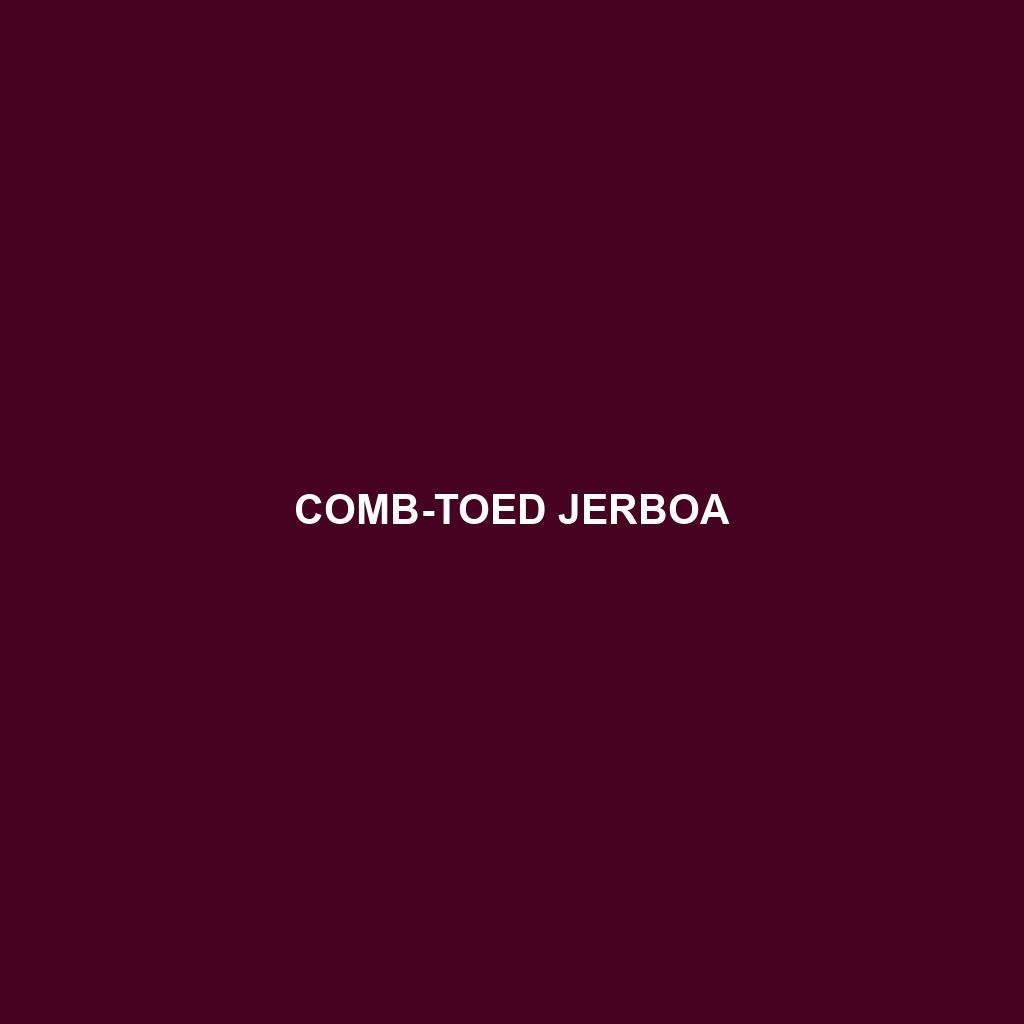Mongolian Three-toed Jerboa
Common Name: Mongolian Three-toed Jerboa
Scientific Name:
Habitat
The Mongolian Three-toed Jerboa is primarily found in the arid regions of Mongolia, particularly in desert and steppe environments. This nocturnal species prefers sandy or loose soils, which provide ideal conditions for burrowing. It typically inhabits areas with sparse vegetation, which aids in avoiding predators while seeking food.
Physical Characteristics
The Mongolian Three-toed Jerboa is a small rodent, ranging from 9 to 12 cm in body length, with an impressive tail that can be up to 20 cm long. Its coat is characterized by a soft, sandy-brown color, which offers excellent camouflage against the desert sands. Distinctive features include large ears adapted for excellent hearing, long hind legs that enable powerful leaps, and three toes on each foot, which assist in navigation across its sandy habitat.
Behavior
Mongolian Three-toed Jerboas exhibit fascinating behaviors that include incredible leaping abilities, allowing them to escape from predators quickly. They are primarily solitary animals, preferring to live and forage alone. Their nocturnal lifestyle means they are most active during the night when they forage for food. They communicate using a series of vocalizations and scent markings.
Diet
The diet of the Mongolian Three-toed Jerboa mainly consists of seeds, roots, and various plants. Due to its environment, it has adapted to consume moisture-rich foods, reducing the need for water intake. The jerboa’s foraging habits are essential in the distribution of seeds, playing a vital role in its ecosystem.
Reproduction
The reproductive habits of the Mongolian Three-toed Jerboa include a breeding season that typically occurs in spring and summer. Females give birth to litters of up to five offspring after a gestation period of about 25 days. The young are born blind and hairless but quickly develop fur and begin to explore their surroundings. Parental care is crucial for the survival of the young.
Conservation Status
As of now, the Mongolian Three-toed Jerboa is classified as “Near Threatened” by the International Union for Conservation of Nature (IUCN). The primary threats to its population include habitat destruction due to agricultural expansion and changes in land use, as well as climate change, which adversely affects its desert ecosystem.
Interesting Facts
– The Mongolian Three-toed Jerboa is known for its extraordinary ability to jump up to 3 meters in length, aiding in its evasion of predators.
– This species can survive long periods without drinking water, extracting moisture directly from its food.
Role in Ecosystem
The Mongolian Three-toed Jerboa plays a significant role in its ecosystem as both a seed disperser and a prey species for various predators, including birds of prey and small mammals. Its burrowing behavior also helps aerate the soil, promoting a healthier environment for plants and other organisms.
